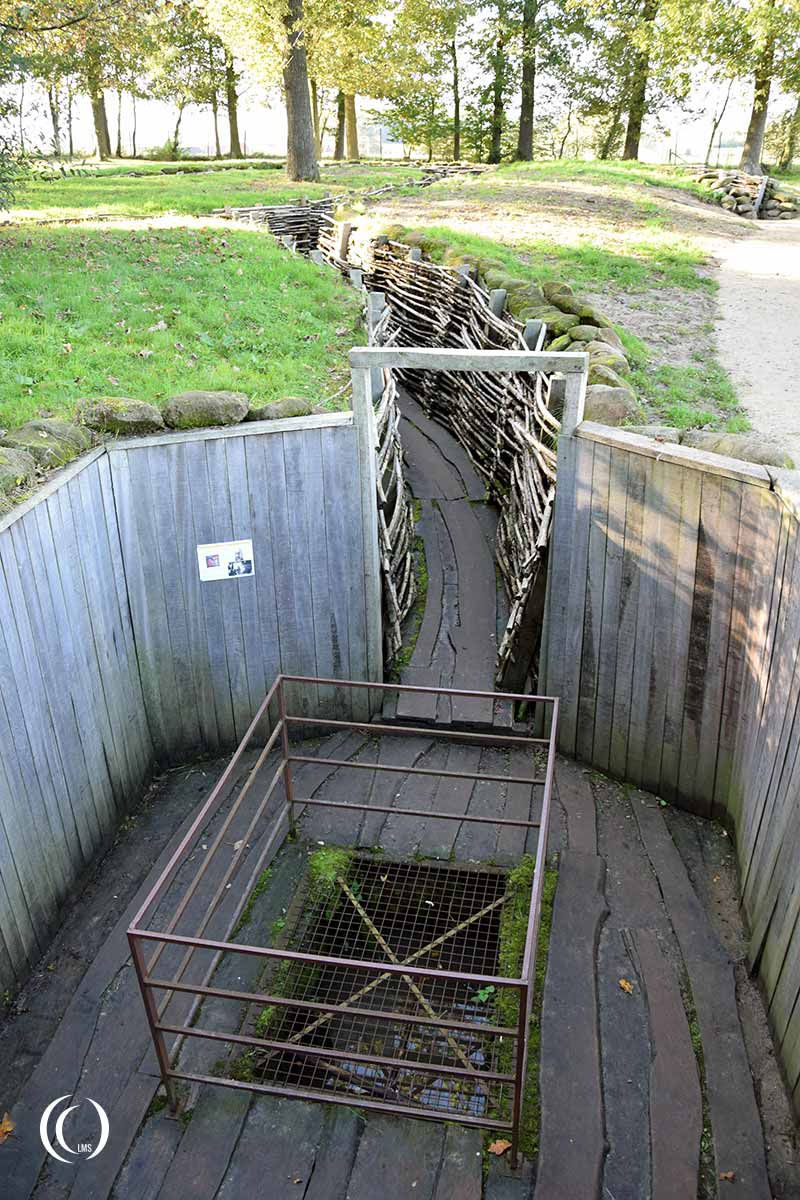
The German WWI front line
The site of Bayernwald, in Flanders known as “Croonaertbos” was part of the German front line during WWI, known as the “Wijtschateboge” and “Ypernboge”. Situated on a hill this position was of great strategic importance and therefore suffered constant attacks and artillery bombardments by the opposing British forces. But the Germans managed to hold the position firmly after it was conquered by the Bavarian Army of Crown Prince Rupprecht von Bayern in 1914 and renamed the position “Bayernwald”. They dug in deep and turned the hill into an almost impregnable fortress by constructing a vast trench system and multiple bunkers, until in June 1917 the position was eventually taken by the British Second Army during the Battle of Messines.


The Battle of Messines
While the German 4th Army held the front line on the ridge of the Ypres Salient, they noticed the British had started digging tunnels on a large scale. Reports of big piles of excavated blue clay behind the British lines seemed to suggest that they were planning an offensive by secretly digging tunnels to reach the ridge, instead of charging up the high ground. So the Germans also began to tunnel deep down into the hill and installed so-called listening posts equipped with stethoscopes in an attempt to discover, intercept and destroy the British tunnels before they reached the surface. In Bayerwald they dug a total of 6 shafts and named them Berta 1 to 6.


But the British plan would reach it’s objective despite the German efforts and it’s unfolding was even more bold than they had expected. By building up the tension along the Ypres and Messines front the activity had lured in more and more German reserves. The first attacks starting from the 4th of June had ensured the trenches were filled with German soldiers, which made the next phase of the plan even more devastating.
On June 7th 1917, nineteen depth charges (another five would fail to detonate) consisting of ca. 500 tons of explosives blew up underneath the German front lines along the ridge stretching from Ypres to Messines, largely destroying the defensive positions and sending men and material flying through the air only to be swallowed by the moving soil seconds later. It is said that the detonations could be heard in London and the blast alone cost the Germans roughly 10,000 lives. The following attack wave of approx. 80,000 British troops made sure the German Army would not get a chance to recover and the line was overrun and conquered.

During their spring offensive of 1918 the German Army managed to retake their former position at Bayernwald, but this would be short lived because on September 28th of the same year the British 34th Division would reconquer it and this time for good.

Lance Corporal Adolf Hitler
Bayernwald is also known for its link to Adolf Hitler when he served as a soldier of the German Army during WWI. Hitler was a Meldegänger (Eng: dispatch runner) in the Reserve Infanterie Regiment 16 (a.k.a. the “List-Regiment” or RIR 16), which was part of the 2nd Bavarian Infantry Regiment. The Regiment took part in clearing the woods at Wijtschate of French soldiers.
The story goes that Hitler and three other dispatch runners saved the life of their regiment commander Lt. Col. Philip Engelhardt under heavy fire during the November offensive to get hold of Bayernwald. On the 2nd of December Hitler was awarded the Iron Cross 2nd Class for his act of bravery. Some sources claim Hitler was lightly wounded during this action.

Visit
Since the accidental discovery of one of the mine shafts in the 1970’s, the site has been opened to visitors, but it was only in recent years that another mineshaft was discovered and 300 meters of the original trenches uncovered and restored thanks to archeological research of ABAF.
Bayernwald re-opened to the public on 17 April 2004 in its current state, which only makes up for around 10% of the actual system. The farm land on the other side of the road near the Bayernwald entrance used to be part of the original position. Today the site holds two mineshafts (Berta 4 and 5), 4 shelter bunkers (of the original 10) and the 300 meters of restored trench system.
For more information about opening hours and admission fee, check http://toerisme.heuvelland.be/tourism/799-www.html
